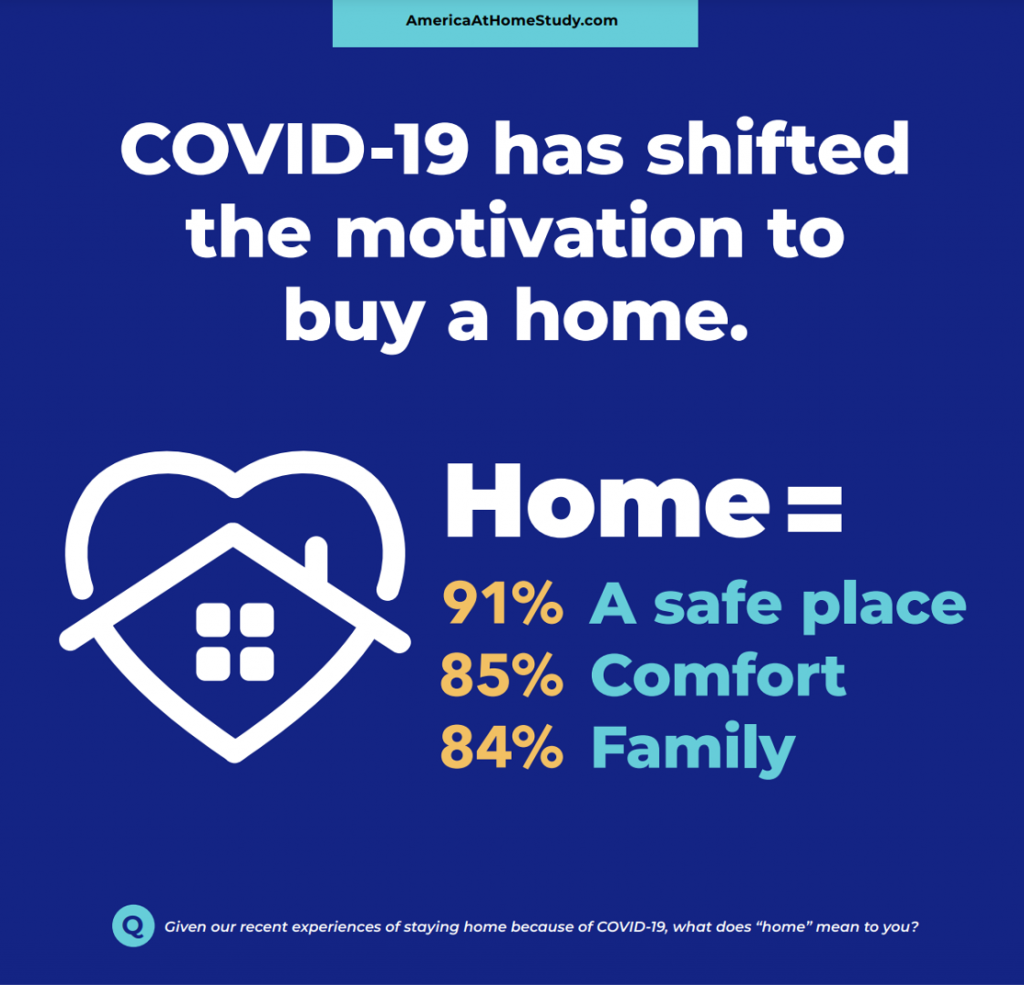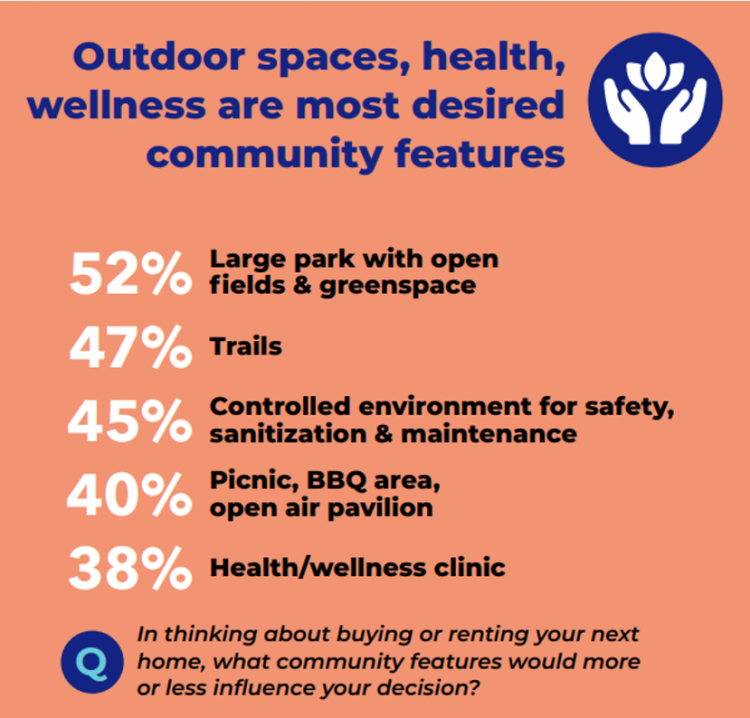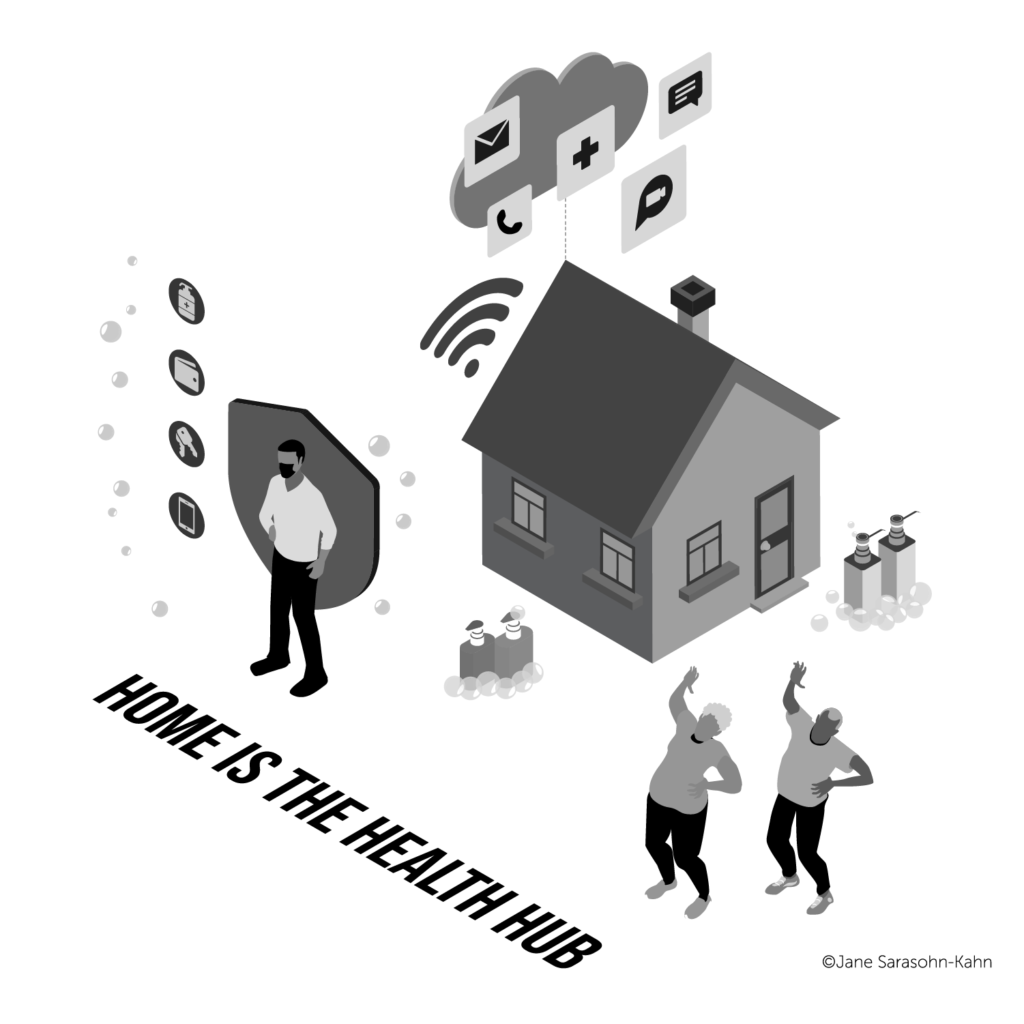The coronavirus pandemic has shifted everything that could “come home,” home.
 THINK: tele-work, home schooling for both under-18s and college students, home cooking, entertainment, working out, and even prayer. All of this DIY-from-home stuff has been motivated by both mandates to #StayHome and #WorkFromHome by government leaders, as well as consumers seeking refuge from contracting COVID-19.
THINK: tele-work, home schooling for both under-18s and college students, home cooking, entertainment, working out, and even prayer. All of this DIY-from-home stuff has been motivated by both mandates to #StayHome and #WorkFromHome by government leaders, as well as consumers seeking refuge from contracting COVID-19.
This risk-shift to our homes has led consumers to re-orient their demands for home purchase features. Today, home is ideally defined as a safe place, offering comfort and refuge for families, discovered in the America at Home Study.
The Study is a joint project of several organizations involved with home design and ownership: the DAHLIN Group, architects and planners; tst ink, a design consultancy; and, the Strategic Solutions Alliance, market research experts in land use, collaborating with Kantar on the market research.
The second wave of this survey was conducted in August 2020 among 3,935 U.S. adults between 25 and 74 years of age with household incomes of $50,000 or more. The initial poll was done in April 2020, two months into the pandemic.
The first wave learned that early in the public health crisis, consumers prioritized outdoor spaces, health and wellness in seeking communities where they wanted to live.

In the follow-up study in October 2020, 83% of consumers cited financial well-being and emotional well0being as top priorities, along with 76% noting physical health and fitness.
Parks and green spaces — including dog parks (rising to 40% of consumers seeking them in the most recent survey versus 29% in April), small neighborhood parks, and health and wellness clinics all increasing in demand from April to October 2020.
To bring these concepts to life, the America at Home project partners are developing a new concept home in Chapel Hill, NC, in 2021.
 Health Populi’s Hot Points: Our homes are our health hubs more than ever, I explained in my book, Health Citizenship: How a virus opened hearts and minds.
Health Populi’s Hot Points: Our homes are our health hubs more than ever, I explained in my book, Health Citizenship: How a virus opened hearts and minds.
In the growing normal of the home as hub for daily work, learning, nutrition, health, and living, a key basic need has been connectivity via some form of broadband. As the diagram illustrates, our home-as-health-hub is connected, enabling all kinds of health and wellness life-flows to happen.
In Maslow’s original Hierarchy of Needs, a basic physiological need at the base of human living was shelter. Translated for our life and well-being in 2020 — 77 years after Maslow published his concept in 1943 — shelter as a basic need means affordable housing.
“Although low interest rates and continued growth in some sectors have bolstered homebuying and the broader economy, conditions have worsened for many households,” a report published earlier this month from the Joint Center for Housing Studies of Harvard University asserts. The State of the Nation’s Housing 2020 was supported by mover than a dozen organizations all serving some aspect of housing in America including the Federal Home Loan Banks, Habit for Humanity, the National Apartment Association, the National Association of Home Builders, the National League of Cities, the National Association of REALTORS, among others.
The COVID-19 pandemic has made very clear, “the nation’s failure to live up to its long-stated goal of a decent home in a suitable environment for all,” the report notes, calling for a re-envisioning of national housing policy.
During the pandemic, people who could work from home have shifted to doing so. However, many workers have not been able to tele-work due to a variety of limitations, the Bureau of Labor Statistics found: many, due to the nature of their jobs needing to be up-close-and-in-person with clients and customers; and millions of other people unable to work from home due to lack of connectivity or space amenable to doing a job in the physical environment itself, according to BLS.
In tomorrow’s Health Populi blog, I’ll continue the theme of the home-as-health-hub with new data from CareCentrix’s Health-at-Home 2020 report where Home is the “new standard of care delivery.”




 I am so grateful to Tom Lawry for asking me to pen the foreword for his book, Health Care Nation,
I am so grateful to Tom Lawry for asking me to pen the foreword for his book, Health Care Nation,  I love sharing perspectives on what's shaping the future of health care, and appreciate the opportunity to be collaborating once again with Duke Corporate Education and a global client on 6th May. We'll be addressing some key pillars to consider in scenario planning such as growing consumerism in health care, technology (from AI to telehealth), climate change, and trust -- the key enabler for health engagement or dis-engagement and mis-information. I'm grateful to be affiliated with the corporate education provider
I love sharing perspectives on what's shaping the future of health care, and appreciate the opportunity to be collaborating once again with Duke Corporate Education and a global client on 6th May. We'll be addressing some key pillars to consider in scenario planning such as growing consumerism in health care, technology (from AI to telehealth), climate change, and trust -- the key enabler for health engagement or dis-engagement and mis-information. I'm grateful to be affiliated with the corporate education provider  Thank you FeedSpot for
Thank you FeedSpot for